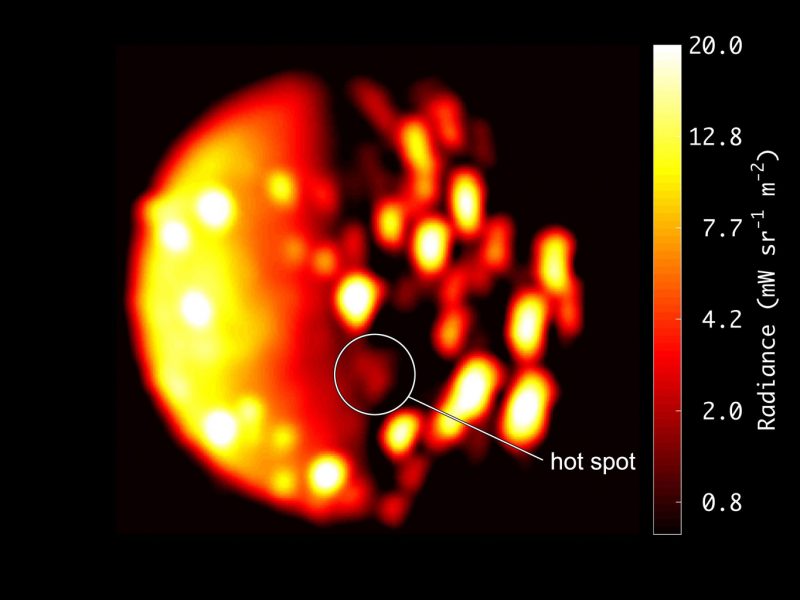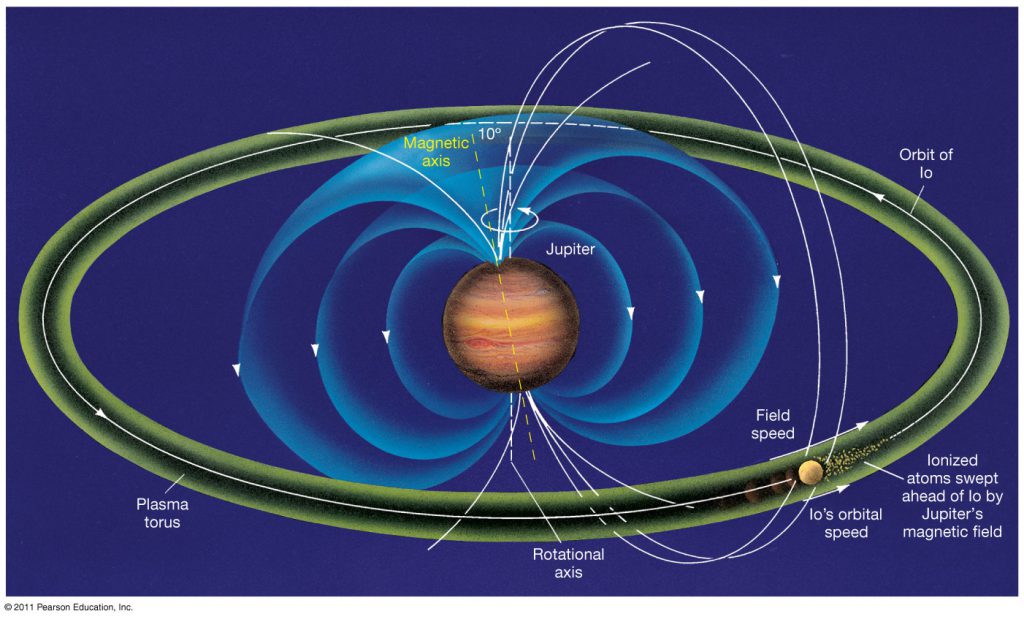|
ORBITAL MECHANICS Scientists thought they knew the rate at which Titan is moving away from Saturn, but they recently made a surprising discovery: Using data from NASA’s Cassini spacecraft, they found Titan drifting a hundred times faster than previously understood — about 4 inches/year.
Juneau dedects massive magma lake near Io’s South Pole larger than Earth’s Lake Superior and belches out eruptions six times the total energy of all the world’s power plants. Io’s volcanism has led to formation of hundreds of volcanic centers. Lava flows tens or hundreds of kilometers long have primarily basaltic composition similar to lavas seen on Earth at shield volcanoes such as Kilauea in Hawaii.
Titan and Io capture electrons from the solar wind on field lines, propogated around their orbital paths, which electrify their surface, induce a voltage potential between surface and core where electrons transform into field lines and photons transform into protons, and protons and electrons transform, in exothermic reactions, into elements which increases Titan and Io’s mass and momentum. The momentum of an orbiting body is the product of the mass, orbital velocity and orbital distance which balances gravity between the orbiting and orbited body. Increasing the mass or velocity of an orbiting body has a multiplier effect on the orbital momentum and the orbital distance, and decreases gravity as the orbital distance increases. Jupiters ionized rotating core transforms the momentum of moving charges into dipole moments. The sum of moments is captured by Jupiter’s field which increases the momentum of orbiting ions in the direction of core rotation and powers the high velocity ring current of heavy ions ejected from Io’s volcanoes around Io’s orbital path. Io captures electrons from the solar wind on field lines propagated around Io’s orbital path which conduct counter flowing currents, powered by moments captured by Io’s field, which transform the momentum of spiralling charges into moments which increases the voltage potential and velocity of the ion current. The magnetosphere of Jupiter sweeps up ionized gases and dust from Io’s thin atmosphere at a rate of 1 tonne per second. This material is mostly ionized sulfur, oxygen, chlorine and sodium chloride dust. Io orbits Jupiter with a velocity of 17 km/sec. The Io plasma torus rotates with a velocity of about 74 km/sec. Since Io is embedded in the Io plasma torus, the torus plasma flows past Io with a relative velocity of 57 km/sec. The high velocity ring current of heavy ions around Io’s orbital path is blocked by Io’s mass, slowing the ion current which increases Io’s orbital velocity. The increase in Io’s mass and orbital velocity is increasing Io’s orbital momentum and theradius of Io’s orbit around Jupiter. The three Galilean satellites are involved in orbital resonance, in which the orbital periods of Ganymede, Europa and Io are in a near 1:2:4 ratio and the mutual conjunctions of the Io–Europa pair and of the Europa–Ganymede pair precess around Jupiter at precisely the same rate.
…one model suggests this resonance was progressively achieved after Io moved outward into a near 2:1 resonance with Europa, and then the Io–Europa pair moved outward until Ganymede was captured into its own near 2:1 resonance with Europa. The six planets of HD110067 form successive pairs of 3:2, 3:2, 3:2, 4:3, and 4:3 resonances, resulting in the closest planet completing six orbits while the outer-most planet does one. |
Atoms are electrons and positrons 2d & 3d photon quanta with opposite and like polarity to the fields of stars and planets





